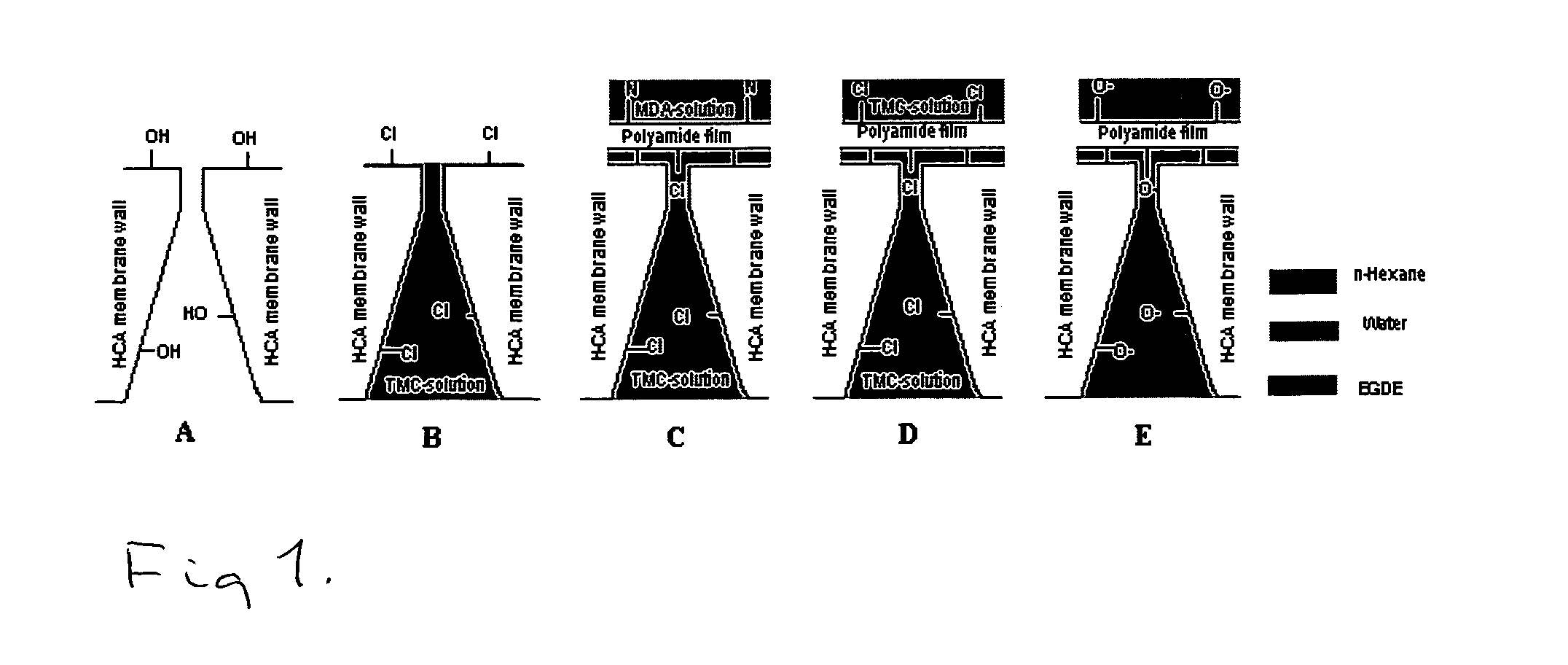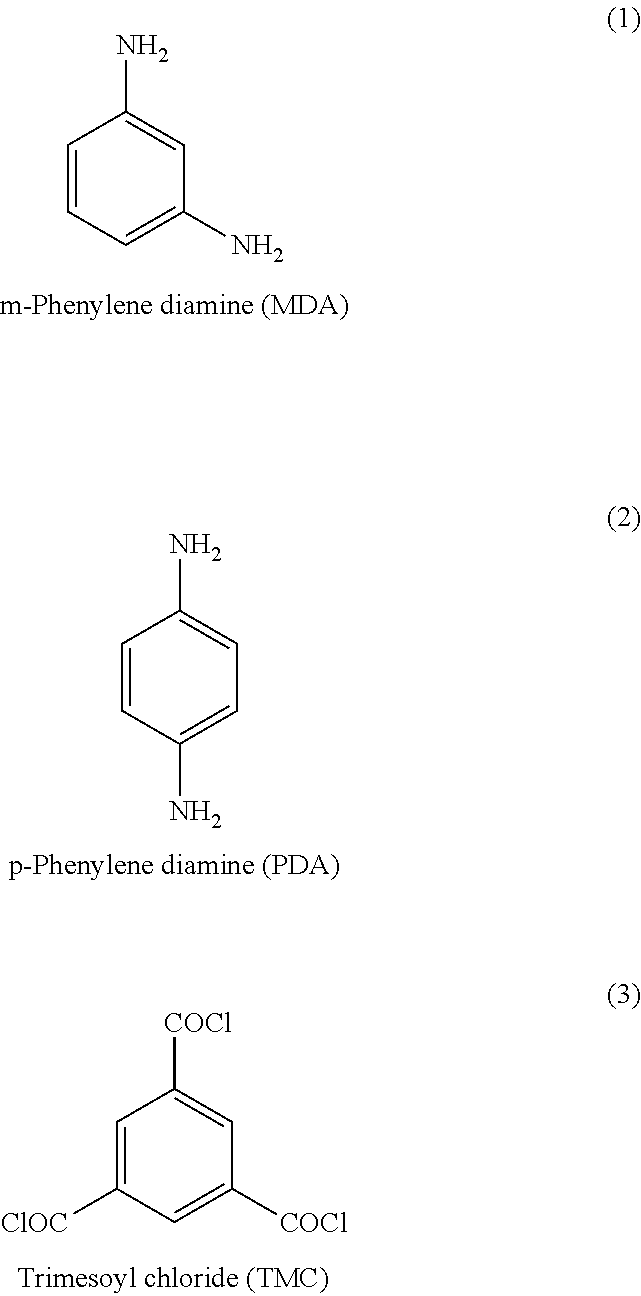Thin film composites
a thin film composite and composite membrane technology, applied in the direction of membranes, sustainable manufacturing/processing, separation processes, etc., can solve the problems of low water permeability, low durability or resistance to compression, and the prior art membranes also commonly suffer low water permeability, so as to improve the salt rejection
- Summary
- Abstract
- Description
- Claims
- Application Information
AI Technical Summary
Benefits of technology
Problems solved by technology
Method used
Image
Examples
examples
Materials
[0072]MDA (1), PDA (2) and TMC (3) from Aldrich and camphorsulfonic acid (CSA) and triethylamine (TEA) from Merck were used. The bottles of MDA and TMC were flushed with argon gas after use to reduce decomposition. The ethylene glycol diethyl ether used as solvent was dried over a column of anhydrous Al2O3 and stored over activated molecular sieves (4 Å). Regenerated cellulose acetate (RCA) from Alpha-Laval was used as the porous support in all examples.
Experimental
[0073]RCA membranes were soaked in ethylene glycol diethyl ether (EGDE) overnight (>12 h). The membranes were soaked for a certain period of time (30 s to 120 s) in a solution of TMC in EGDE. The excess solvent on the membrane was removed using paper tissues and a rubber roller. The membranes were dried under argon or in vacuo for a certain period of time (30 min to 90 min). A solution of MDA (or PDA), CSA and TEA in water were prepared and the membranes were soaked for 30 s to 90 s. Excess solvent was removed by...
PUM
| Property | Measurement | Unit |
|---|---|---|
| thickness | aaaaa | aaaaa |
| pore size | aaaaa | aaaaa |
| total thickness | aaaaa | aaaaa |
Abstract
Description
Claims
Application Information
 Login to View More
Login to View More - R&D
- Intellectual Property
- Life Sciences
- Materials
- Tech Scout
- Unparalleled Data Quality
- Higher Quality Content
- 60% Fewer Hallucinations
Browse by: Latest US Patents, China's latest patents, Technical Efficacy Thesaurus, Application Domain, Technology Topic, Popular Technical Reports.
© 2025 PatSnap. All rights reserved.Legal|Privacy policy|Modern Slavery Act Transparency Statement|Sitemap|About US| Contact US: help@patsnap.com



